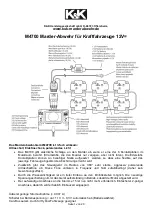
HEAD RESTRAINTS
Head restraints are designed to reduce the risk of injury by restricting head movement in
the event of a rear-impact
.
Head restraints should be adjusted so that the top of the
head restraint is located above the top of your ear
.
WARNING!
•
All occupants, including the driver, should not operate a vehicle or sit in a vehicle’s
seat until the head restraints are placed in their proper positions in order to mini-
mize the risk of neck injury in the event of a crash
.
•
Head restraints should never be adjusted while the vehicle is in motion
.
Driving a
vehicle with the head restraints improperly adjusted or removed could cause seri-
ous injury or death in the event of a collision
.
Reactive Head Restraints — Front Seats
The front driver and passenger seats are equipped with Reactive Head Restraints
.
In the event
of a rear impact, the Reactive Head Restraints will automatically extend forward, minimizing the
gap between the back of the occupant's head and the Reactive Head Restraint
.
To raise the head restraint, pull upward on the head restraint
.
To lower the head re-
straint, push the adjustment button located at the base of the head restraint, and push
downward on the head restraint
.
To remove the head restraint, raise it as far as it can go then push the adjustment button,
and the release button at the base of each post while pulling the head restraint up
.
To
reinstall the head restraint, put the head restraint posts into the holes and push down-
ward
.
Then adjust it to the appropriate height
.
1 — Release Button
2 — Adjustment Button
GETTING STARTED
48
















































